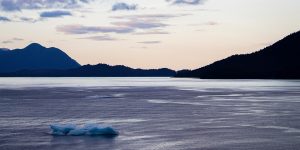Modified Vessels Require New Stability Reports
 Vessel stability refers to the ability of a vessel to return to its upright position after being heeled over by wind, waves, or other forces. If a vessel is not stable, it is susceptible to capsizing. Each vessel is unique and therefore needs its own stability report prepared by a qualified naval architect.
Vessel stability refers to the ability of a vessel to return to its upright position after being heeled over by wind, waves, or other forces. If a vessel is not stable, it is susceptible to capsizing. Each vessel is unique and therefore needs its own stability report prepared by a qualified naval architect.
Vessel stability was in the news again after the National Transportation Safety Board released its findings regarding the sinking of F/V PACIFIC KNIGHT, the vessel that capsized in Bristol Bay on July 25th, 2018. There were several contributing factors, but they all led back to stability. An overloaded vessel and an inadequate assessment of the vessel’s stability was cited as the cause of this devastating accident that took the life of a 59-year-old fisherman.
Vessel stability is complex and must be calculated by a professional. It is recommended that new stability reports be completed every 10 years or after any and all changes to equipment or modifications are made to a vessel. Stability is not a constant condition; it undergoes continuous changes during each voyage and through the life of a vessel.
According to an insurance report from 2015, the F/V PACIFIC KNIGHT had a stability report that was dated April 23, 1996 (it was more than 22 years old). No copy was found in the wreckage, and very few records of maintenance or modifications to the vessel were available, even though major alterations had been made which changed the vessel load line and stability. For example, the aft deck enclosure and equipment (which included long lining equipment) had been removed and two pedestal cranes were added to the main deck. A knuckle-type boom crane was added to the starboard side, and a larger and heavier telescopic crane added to the port side. Investigators found no weights or installation specifications for the cranes, nor was a stability assessment made after their installation.
The day prior to the sinking, it was reported that the vessel was carrying about one ton of ice in the aft fish hold and that the main fish hold was three-quarters full of seawater. Four sacks of ice were delivered to the main deck of the vessel, as fish tenders stock ice, which is received from the cannery, then provided to the fishing vessels that offload their catch to the tenders.
Those who witnessed the sinking reported that the vessel capsized and sank abruptly, leaving only the starboard quarter protruding from the water. The vessel had no reported issues, and upon recovery, the hull showed no signs of leaks or damage. There was no evidence of machinery defects or structural failures that could have caused the vessel to capsize and sink.
Slack water in the main fish hold also caused complications. A heeling moment on the vessel induced by wind, waves (even small ones), the wake from another vessel, vessel movement from the current while at anchor, or contact with the bottom would have likely induced a list. Water in the fish hold then would have flowed to the low (port) side of the vessel, and with little reserve buoyancy or righting energy to resist these forces, the vessel capsized.
Stacey and Jacobsen, PLLC asks that all vessel owners and people who work at sea read the newly updated safety report prepared by the U.S. Coast Guard. Please update your stability report by making all necessary adjustments to your vessel. Your life and the lives of your crew may depend on it.
 Maritime Injury Law Blog
Maritime Injury Law Blog

